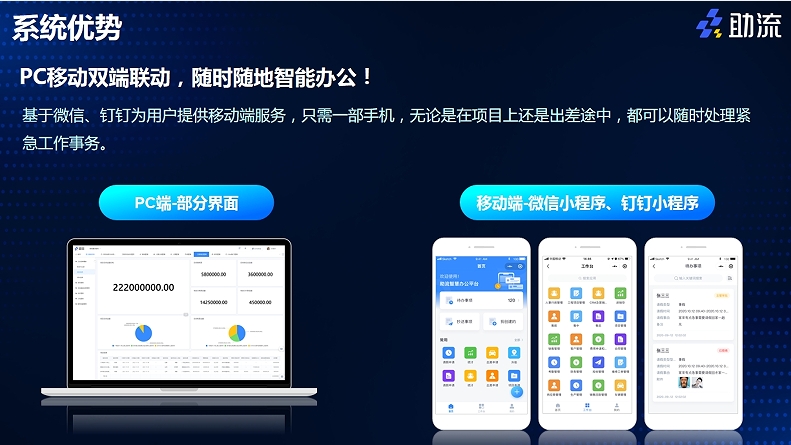在建筑行业竞争日益激烈的当下,建筑成本管理系统的创新成为企业获取利润、提升竞争力的关键。传统的成本管理方式因信息滞后、流程繁琐,已难以满足现代化建筑项目对精细化管理的需求。建筑成本管理系统的创新模式应运而生,它利用先进的信息技术,为建筑企业提供了一套全面、高效的解决方案,助力企业优化成本支出,提升经济效益。
传统的建筑成本管理主要依赖于人工操作和纸质文件,这种方式存在诸多问题。首先是数据孤岛问题,各部门之间的信息无法实时共享,导致数据不一致和重复劳动。其次是效率低下,人工处理大量的成本数据费时费力,容易出现错误。再次是决策支持不足,传统的系统缺乏数据分析和预测功能,无法为管理层提供及时、准确的决策支持。
系统覆盖项目从规划到竣工的全生命周期,实时监控成本动态。在前期规划阶段,通过精确的预算编制功能,结合历史数据和市场信息,生成科学合理的成本预算。在项目实施过程中,实时跟踪成本支出,与预算对比分析,及时预警并提供调整建议,确保成本可控。例如,某大型商业建筑项目通过该系统精准编制预算,并实时监控成本支出,成功将项目成本降低了5%。
系统实现了成本核算的精细化管理,能够准确记录和分类各项成本,包括人工、材料、设备和管理费用等。通过建立完善的成本核算体系,项目管理人员可以详细掌握成本构成,找出潜在的成本控制点。例如,系统可以实时统计人工工时和材料用量,与预算进行对比分析,及时发现并纠正成本偏差,避免不必要的浪费。
借助大数据分析技术,系统对海量的成本数据进行深度挖掘和分析,生成直观的可视化报表和图表。这些报表能够清晰展示成本构成、成本趋势和成本偏差等关键信息,为管理层提供科学决策的依据。通过对历史数据的分析,系统还可以预测未来的成本走势,帮助企业提前做好成本规划和风险防范。例如,系统利用大数据分析技术,挖掘历史项目数据中的成本规律,为新项目的成本预算和管理提供参考。
系统优化了物资采购和库存管理流程,通过与供应商系统的无缝对接,实现价格比对、订单跟踪和履约评价等功能,降低采购成本。在施工现场,利用扫码或RFID技术实时记录物资使用情况,确保材料合理使用,避免浪费。例如,系统可以根据库存水平自动生成补货建议,同时优化库存结构,减少资金占用,提高资金周转率。
系统实现了资金流的透明化管理,实时监控项目的收入和支出情况,确保资金使用的合理性和合规性。通过资金计划可视化功能,管理层可以清晰了解项目的资金需求和使用进度,优化资金配置,提高资金使用效率。此外,系统还支持付款数据实时比对,确保每一笔支出都有据可依,避免超支和浪费。
以某大型建筑企业为例,该企业通过引入建筑成本管理系统,实现了成本管理的全面升级。在预算编制阶段,系统根据项目的详细规划和历史数据,生成了详细的成本预算。在项目实施过程中,系统实时监控成本支出,及时发现并预警潜在的成本超支风险。通过优化资源配置和调整施工方案,项目最终实现了成本节约8%,同时确保了工程质量和进度。此外,系统还通过数据分析功能,帮助企业管理层发现了多个成本控制的关键点,为企业的长期发展提供了有力支持。
建筑成本管理系统的创新模式通过全周期成本管控、精细化成本核算、智能化数据分析、高效物资管理和资金流透明化等功能,为建筑企业提供了一套全面、高效的解决方案。它能够帮助企业精准控制成本支出,提高资源利用效率,降低运营风险,从而在激烈的市场竞争中脱颖而出。未来,随着技术的不断创新和发展,建筑成本管理系统的创新模式将继续优化升级,为建筑行业带来更多的价值和机遇。

相关资讯:
2026-01-05
2026-01-05
2026-01-05
2026-01-05
2026-01-05
2026-01-05
2026-01-05
2026-01-05
2026-01-04
2026-01-04